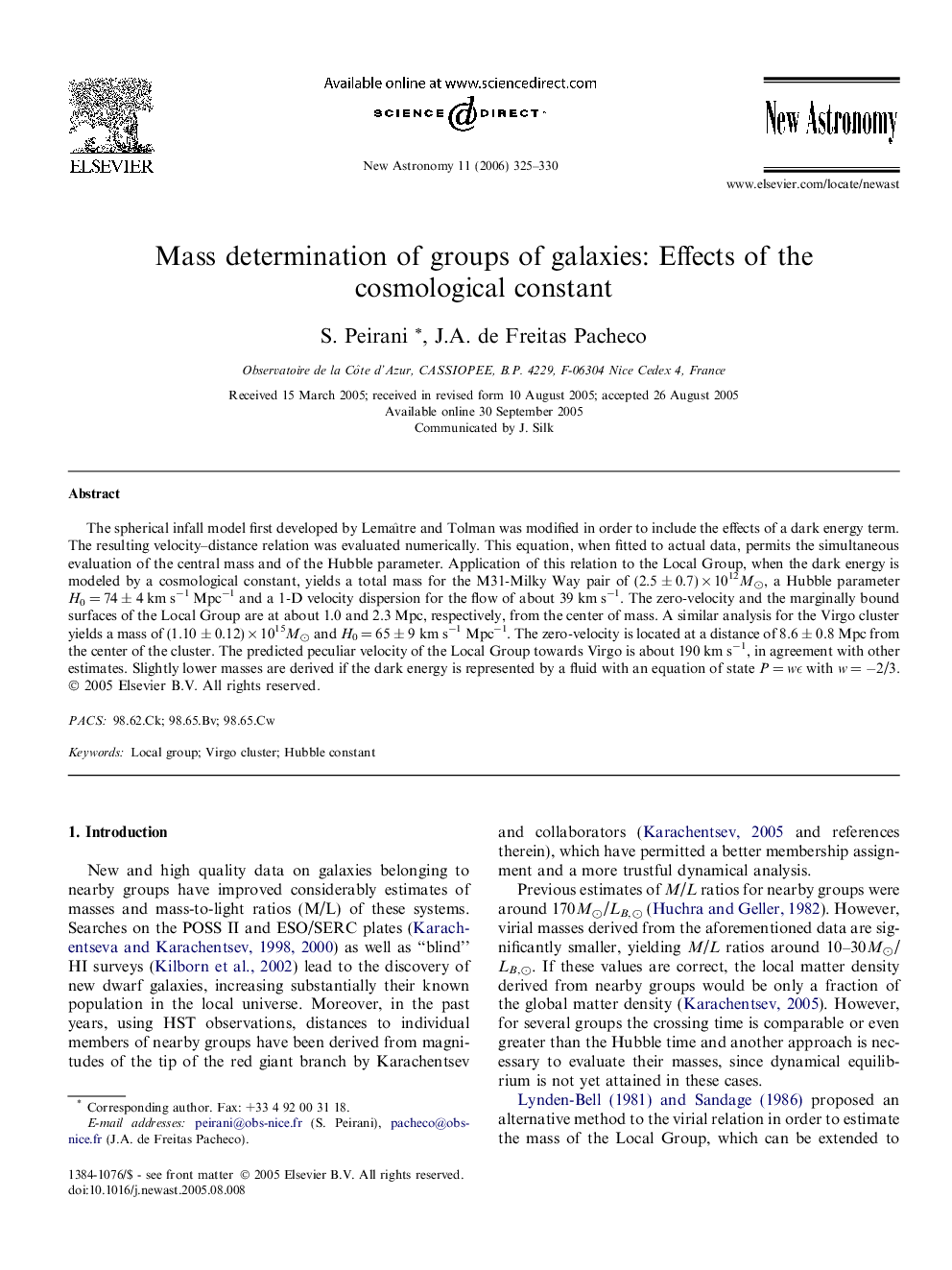| Article ID | Journal | Published Year | Pages | File Type |
|---|---|---|---|---|
| 1779556 | New Astronomy | 2006 | 6 Pages |
The spherical infall model first developed by Lemaıˆtre and Tolman was modified in order to include the effects of a dark energy term. The resulting velocity–distance relation was evaluated numerically. This equation, when fitted to actual data, permits the simultaneous evaluation of the central mass and of the Hubble parameter. Application of this relation to the Local Group, when the dark energy is modeled by a cosmological constant, yields a total mass for the M31-Milky Way pair of (2.5 ± 0.7) × 1012M⊙, a Hubble parameter H0 = 74 ± 4 km s−1 Mpc−1 and a 1-D velocity dispersion for the flow of about 39 km s−1. The zero-velocity and the marginally bound surfaces of the Local Group are at about 1.0 and 2.3 Mpc, respectively, from the center of mass. A similar analysis for the Virgo cluster yields a mass of (1.10 ± 0.12) × 1015M⊙ and H0 = 65 ± 9 km s−1 Mpc−1. The zero-velocity is located at a distance of 8.6 ± 0.8 Mpc from the center of the cluster. The predicted peculiar velocity of the Local Group towards Virgo is about 190 km s−1, in agreement with other estimates. Slightly lower masses are derived if the dark energy is represented by a fluid with an equation of state P = wϵ with w = −2/3.
